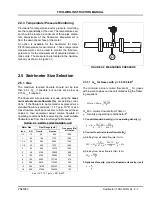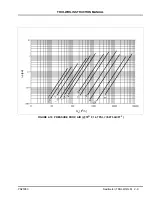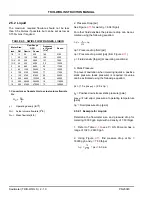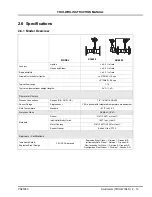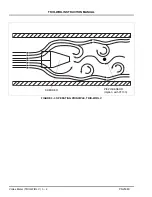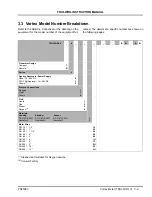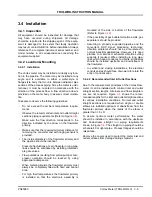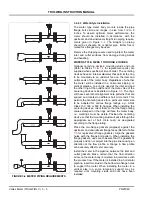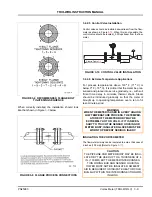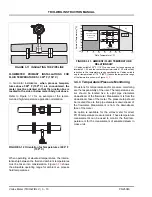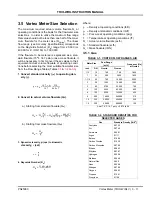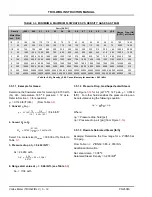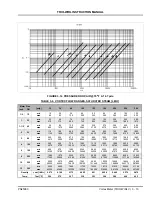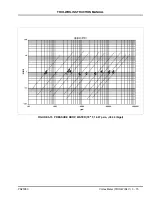
PN25080
Vortex Meter (TRIO-WIRL V) 3 - 1
TRIO-WIRL INSTRUCTION MANUAL
CHAPTER 3 Vortex Meter (TRIO-WIRL V)
3.1 General
The volumetric flowrate of steam, gases and liquids
can be measured over wide flow ranges independent
of the fluid properties with this newest member to the
Vortex Meter line.
Special features of this Vortex meter are:
*
Accuracy: Liquids:
≤
±0.75% of rate
Gas/Steam:
≤
±1% of rate
*
Rugged and simple flowmeter primary design.
*
Wafer design.
*
High temperature design to 400ºC (750ºF).
*
High pressure design to ANSI CL 900.
*
operating modes for volume and mass rate
3.2 Measurement Principle
The operation of the TRIO-WIRL V vortex meter is
based on the Karman Vortex Street. Vortices are
formed as the fluid flows around a shedder body.
These vortices are alternately shed from the sides of
the shedder body. The fluid flow causes these vortices
to be released forming a "vortex street" (Karman Vortex
Street), refer to Figures
The frequency
f
of the vortex shedding is proportional
to the flow velocity
v
and inversely proportional to the
width of the shedder body
d
:
The quality of the vortex flowrate measurements is
determined by the dimensionless Strouhal Number
(St). By appropriate design of the shedder body,
St
is
constant over a wide Reynolds Number (
Re
) range as
shown in Figure
As a result, the vortex shedding frequency to be evalu-
ated, is only a function of the flow velocity and is inde-
pendent of the fluid density and viscosity.
The local pressure changes resulting from the vortex
shedding are detected by a Piezo sensor and con-
verted into electrical pulses corresponding to the vortex
shedding frequency. The flowrate proportional fre-
quency signal generated in the flowmeter primary is
processed in the converter into a current output (4 - 20
mA) signal.
shows a cross-sectional view of the Karman
Vortex Street and the generated vortices.
FIGURE 3-1 FLOW MEASUREMENT PRINCIPLE,
TRIO-WIRL V
Shedder Body
Piezo
Sensor
FIGURE 3-2 STROUHAL NUMBER / REYNOLDS
NUMBER RELATIONSHIP
f
St
v
d
---
×
=
Re
v D
×
µ
-------------
=
= Kinematic viscosity
D = Meter tube diameter
v = Flow Velocity
µ





